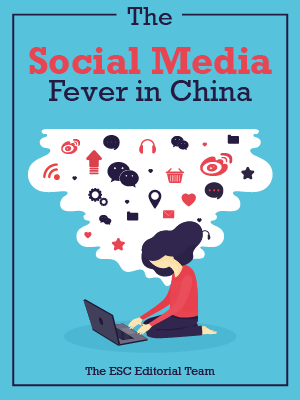Ecommercestrategychina.com uses cookies and other technologies to provide you a better browsing experience. You can get more information regarding the use of cookies, or decline it whenever by clicking Privacy Policy. By using this site or clicking “Okay”, you give us the consent to the use of cookies.
OKAY
Social e-commerce is currently the hottest buzzword in China. It is often described as a combination of social network and e-commerce. In principle, however, any trade conducted on social media can be classified as social e-commerce. In this post, we will take a closer look at the main types of social e-commerce in China and help companies to identify the latest e-commerce trends and possible test methods.
E-commerce + social networking
Simply put, this refers to traditional e-commerce that has been transformed into social e-commerce, and can typically be divided into two types. The first originated as an online shopping platform and was then derived into a community where users can discuss and share their experiences and find out what is new in the industry. The opinions and feedback or so-called User-Generated Content (UGC) are more effective than advertising to complete the buying decisions of potential customers. The second one is a mix of e-commerce and social media presence. One of the concepts of social buying is Pinduoduo’s group purchasing: users invite their friends and family to shop together through social messaging platforms for a better price. E-commerce retailers use Key Opinion Leaders (KOLs) to communicate with customers and drive conversions. The Influencer Marketing campaign during the Double 11 Shopping Festival led by JD, a Chinese e-commerce behemoth, was a successful sales promotion in collaboration with web stars.
Social media + E-commerce
This mode goes in the opposite direction: communities with large user bases are evolving into e-commerce marketplaces, which, alongside the sale of ad space, is now a typical monetisation for social media networks.
A good case in point is Xiaohongshu (Little Red Book). It was initially a social media platform where Chinese shoppers posted recommendations about products they purchased abroad or tips on travelling abroad. The User-Generated Content (UGC) has since proliferated and diversified, ranging from beauty, make-up, skincare, shopping/travel tips, restaurant recommendations to anything that people find interesting to share. After that, Xiaohongshu succeeded in introducing the e-commerce business, including self-operation and retailer-operation modes. Contributors can add the hyperlink in their notes, through which the viewers will be redirected to buy the product being discussed and recommended. In this way, a transition from content to e-commerce is established. Although it does not provide display advertising services, its dynamic network with social interactions between ordinary users and the participation of KOLs is regarded ideal for brand promotion.
Online Shopping Guides
There are shopping assistants while we shop in a store. Now e-commerce businesses are considering online shopping guides to build a close relationship with customers. Rather than employing customer service agents, they pay KOLs to do the work, as most of them specialise in niche areas and maintain a strong interaction with their followers, giving users a sense of closeness and confidence that they will pass on accurate and credible information.
(The Social Media Fever in China - Introducing the history and trends of social media in China)
Micro-business on WeChat
WeChat, the largest social network in China, has become an important gateway for online businesses, especially for smaller retailers or independent sellers. Micro e-commerce on WeChat has flourished for years. Unlike traditional e-commerce sellers who attract customers through advertising spending and sponsored placement in search results, WeChat sellers develop their customer base through personal networks and creating shareable content. Although the WeChat environment is more “private” and thus limits the scalability of business, such straightforward social e-commerce is proving efficient and growth can be impressive. According to the owner of a WeChat store that sells accessories imported from Korea, she simply posts photos of the products on her personal WeChat account, which are only visible to her contacts. However, when friends and regular customers began to share her account, she quickly expanded her contact book, and thus potential customers. She did not even set up an official account through which businesses can send messages to subscribers.
Social shopping is an emerging trend in China, giving brands the opportunity to creatively grow their business. To keep up with the competition and stay relevant in China’s e-commerce market, not only do you need a clear understanding of this trend, you also need appropriate plans to integrate the social element into your digital e-commerce initiatives.
Please Login to add comments.

$9.99 $19.98

$9.99 $19.98
By pHqghUme December 7th, 2023
555
By pHqghUme December 7th, 2023
555
By pHqghUme December 7th, 2023
555
By pHqghUme December 7th, 2023
fw90oruJ
By pHqghUme December 7th, 2023
-1 OR 2+691-691-1=0+0+0+1 --
By pHqghUme December 7th, 2023
-1 OR 2+367-367-1=0+0+0+1
By pHqghUme December 7th, 2023
-1' OR 2+726-726-1=0+0+0+1 --
By pHqghUme December 7th, 2023
-1' OR 2+997-997-1=0+0+0+1 or '6FLEg6yP'='
By pHqghUme December 7th, 2023
-1" OR 2+528-528-1=0+0+0+1 --
By pHqghUme December 7th, 2023
if(now()=sysdate(),sleep(15),0)